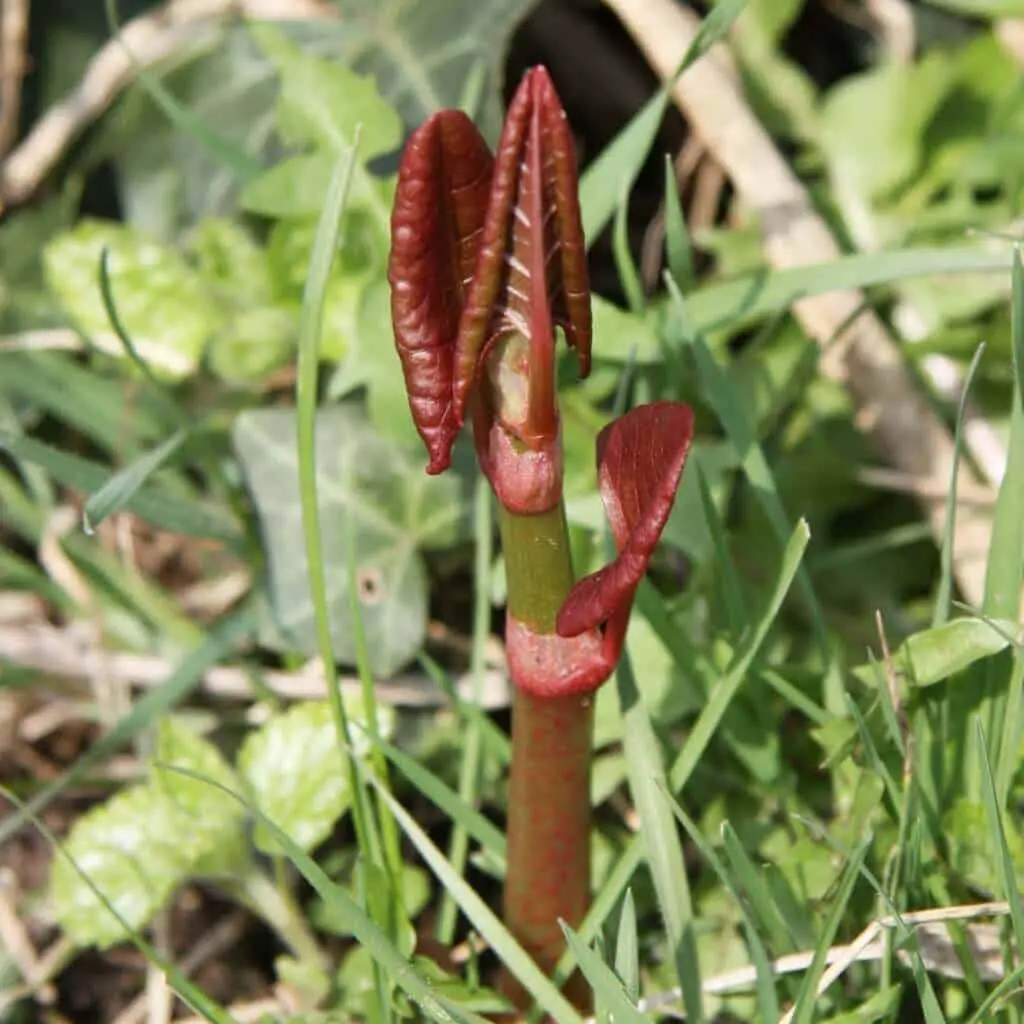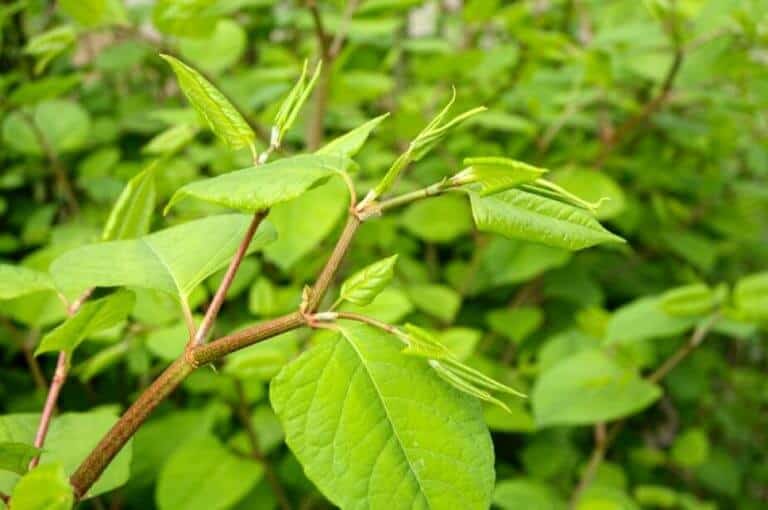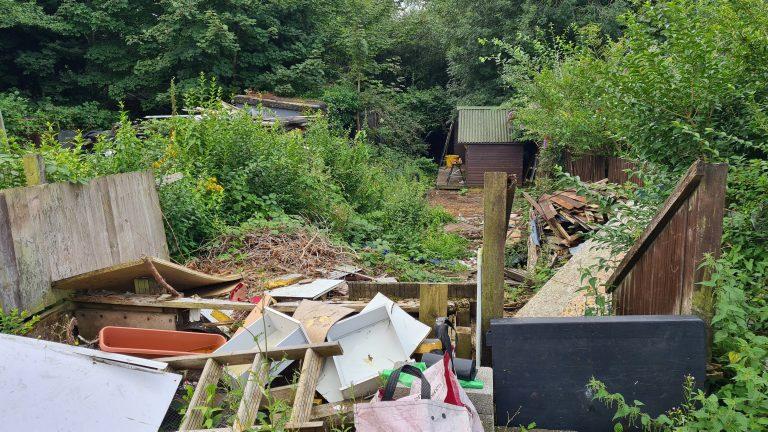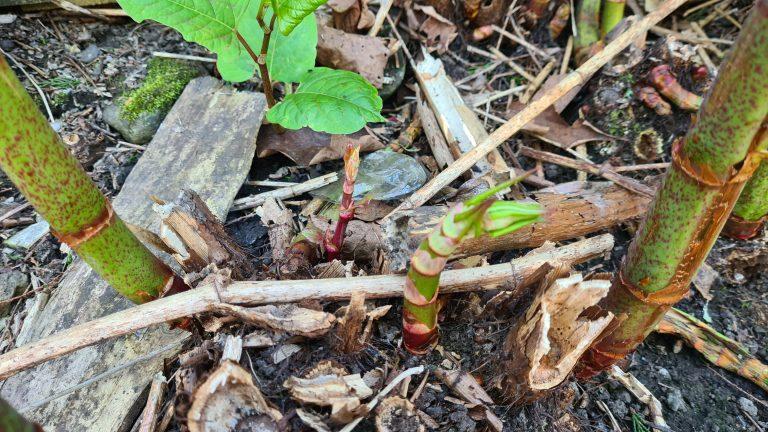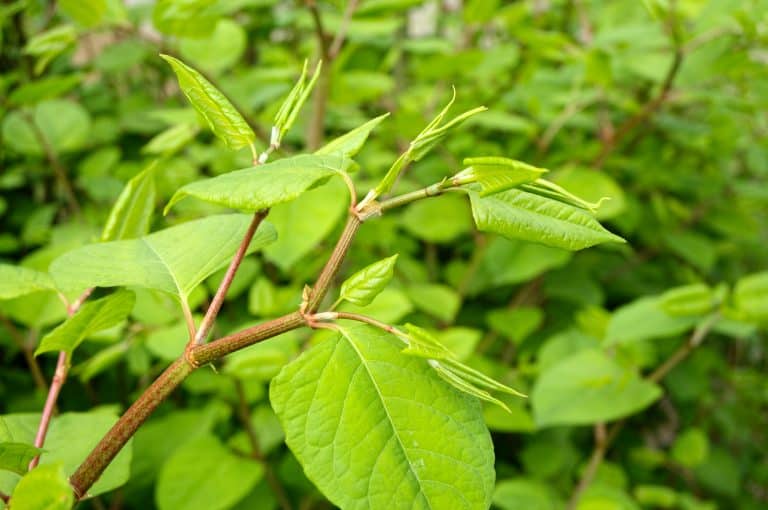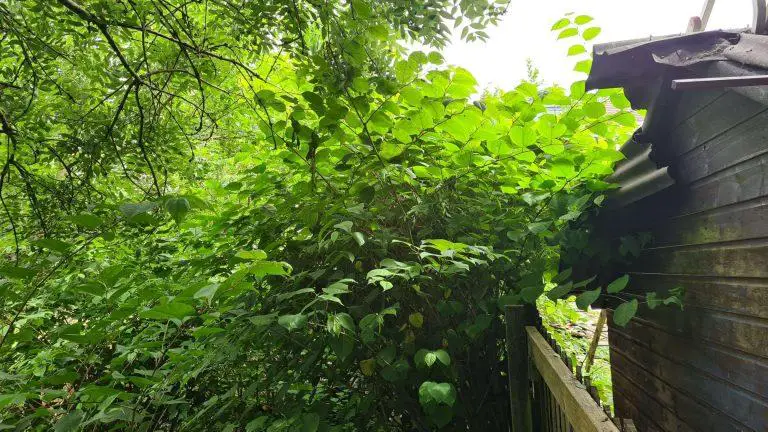The Japanese knotweed was introduced to the UK in the early 19th Century from East Japan, and from that point on, the Japanese knotweed shoots grew to dominate a huge amount of the UK landscape.
Today, it is the most widespread type of knotweed in the UK. Other knotweed forms in other parts of the UK are strictly related to Japanese knotweed.
This plant grows everywhere, thus causing damage to properties, roads, and other forms of infrastructure. It is, therefore, essential to know what the shoots look like so that you can eradicate it as soon as you can if the knotweed is growing in or near your property.
Knowing that many species can be mistaken for Japanese knotweed is essential. This fact makes its identification a challenge. For example, Bamboo is the most common plant that is usually mistaken for Japanese knotweed.
The main difference is that the Bamboo plant has jointed stems and slender leaves, while the Japanese knotweed has hollow stems and broad heart-shaped leaves. The broad-leaved dock is often confused with first knotweed shoots.
Japanese knotweed shoots explained per season
The Japanese knotweed shoots appear differently during each of the four seasons. Its shoot appearance will depend on the time of the year. Here is how the shoots of the plant transform throughout the seasons:
Japanese knotweed shoots in spring
The Japanese knotweed grows fast in spring. During this season, the new shoots appear and proliferate to form stems. The stalks are red and resemble the asparagus. The leaves grow and turn green. Japanese knotweed grows mainly during the first weeks of spring.
The Japanese knotweed stems can grow from the shoots to about 3 meters high.
Japanese knotweed shoots in summer
The plants will grow fully during the summer period. The mature canes are hollow with a purple speckle forming a dense that is 3 meters dense. During the last weeks of summer, the weed’s flowers appear, increasing the plant’s overall density.
The flowers are formed in clusters that grow to about 0.7cm widespread on the plant’s surface.
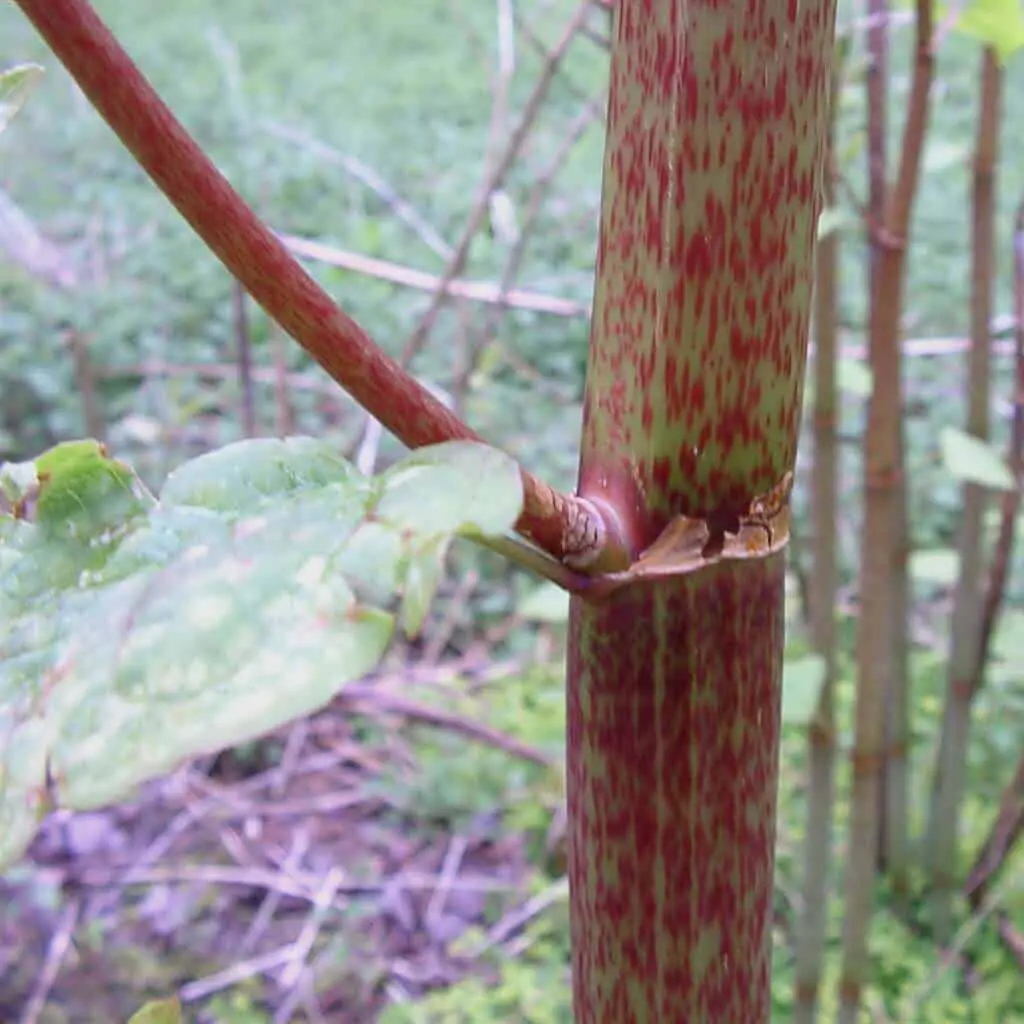
Japanese knotweed shoots in autumn
One will still notice the large size of the weed in the first weeks of autumn due to dense leaf coverage. The leaves grow large and broaden during this time; they remain sharp-pointed and alternatively, appear from the stem.
Towards the end of October, the leaves will turn yellow and begin to fall. The stems are red and hollow; they begin to turn brown. During this time, the plant is still 3 meters high. The seed cases begin to fall at this time.
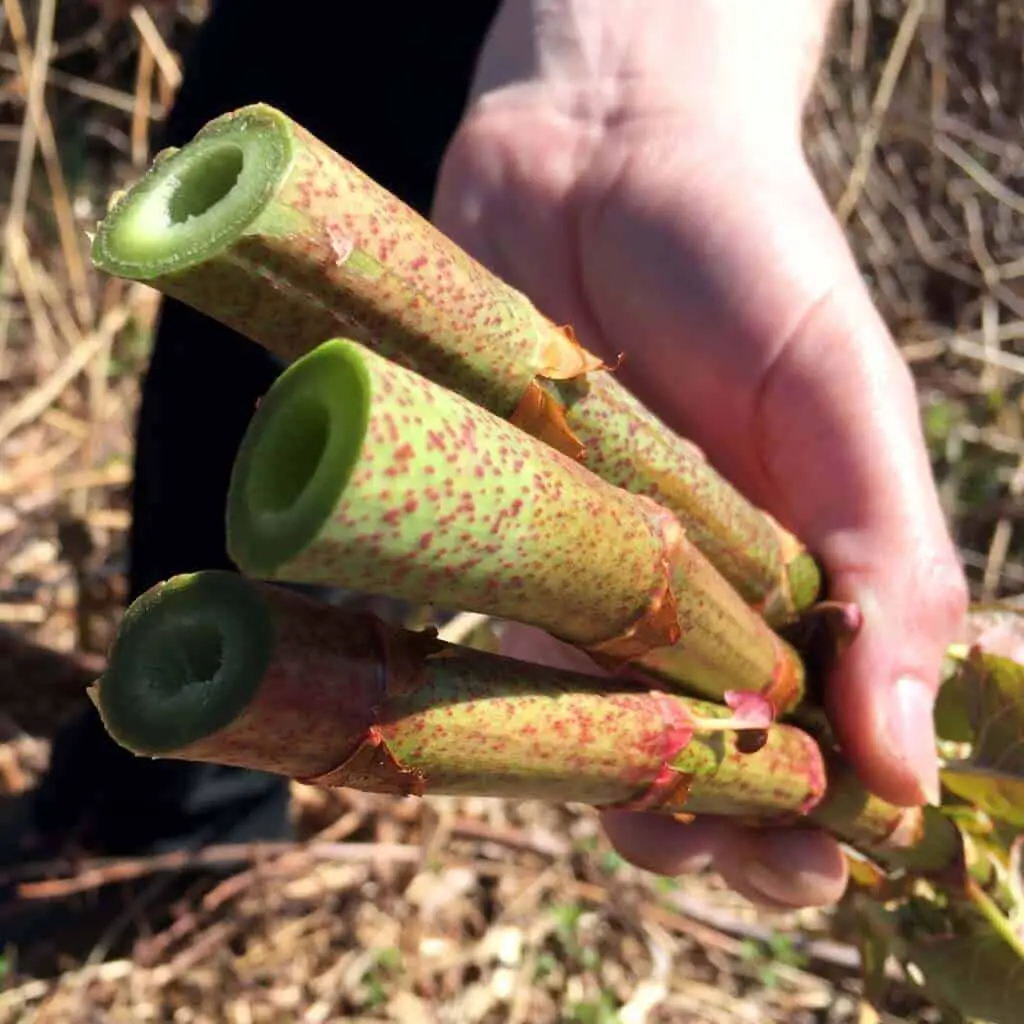
Japanese knotweed shoots in winter
During the last weeks of autumn and the beginning of winter, the stems die off as the plant goes into dormancy. The remaining leaves will turn yellow and finally fall off.
The shoots quickly die and change their colour to dark brown; the stems will have a brown colour resembling bamboo; they easily collapse and fall on each other due to their brittleness.
Some canes will remain erected throughout this period. First shoots can be seen growing through the rods in early spring.
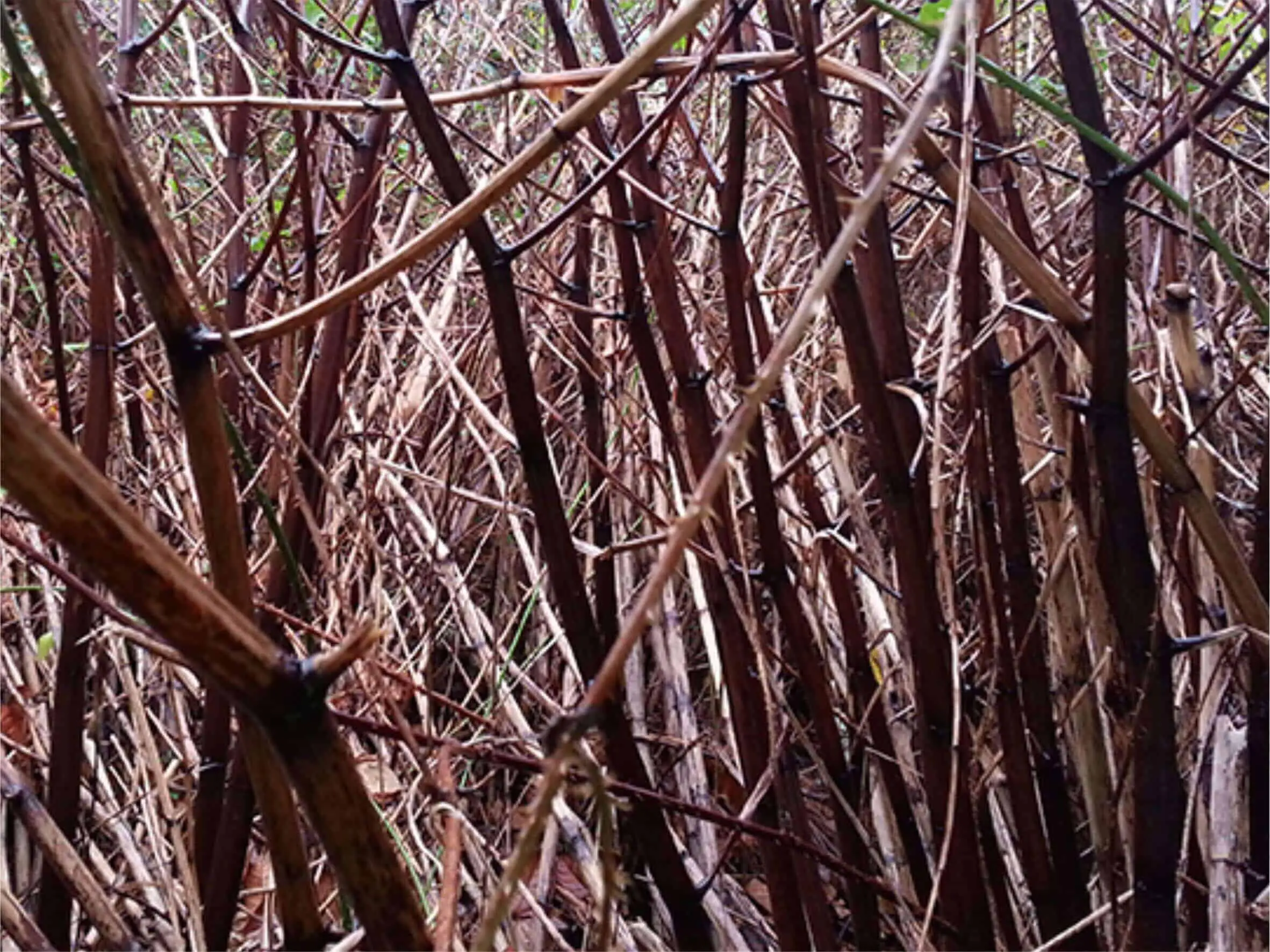
What does Japanese knotweed have red stems?
The Japanese knotweed can be mistaken for Bamboo. It has red or purple shoots during the first weeks of life. As summer approaches, the stems of Japanese knotweed become thicker and will resemble bamboo. The plant will have purple speckles on the stem.
The stems change from reddish-brown to dark brown in preparation for winter. The weed’s stems will look similar to those of bamboo during winter dormancy.
General Characteristics of Japanese knotweed
Leaves
The weed’s leaves are heart-shaped but flat at the base where the stem joins the leaf. The leaves grow in an alternate pattern on the stem in a zigzag pattern.
Stems
One distinctive feature of the Japanese knotweed is the appearance of its stem. The stems grow in a zigzag manner, as in mature plants. The stems retain their zigzag nature even after they die in winter.
Roots
The rhizomes of the knotweed feature an orange tinge that can be seen when cut. The root snaps easily; its exterior is dark brown.
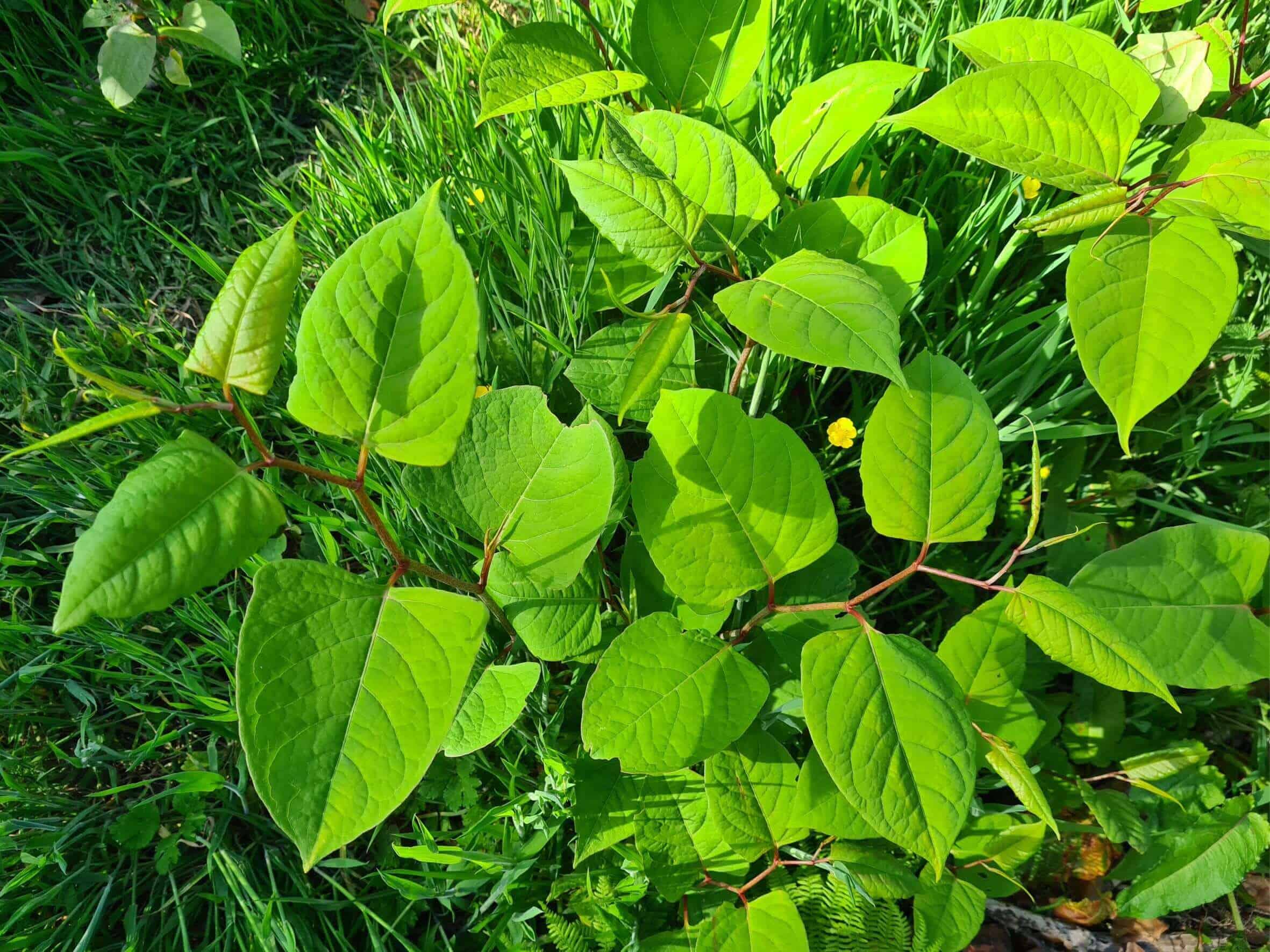
Where does Japanese knotweed grow?
The Japanese knotweed is an invasive plant that grows in all conditions. It grows fast in saline areas with high temperatures and wet soil. It can also grow tremendously around properties, low-lying regions, and dumping sites.
Is Japanese knotweed edible?
Yes. The plant has been a delicacy in some parts of the UK without causing health issues. The young shoots are harvested when about 8 inches long. When cooked, they taste more like a lemon.
The early shoots can be eaten raw or as a more substantial meal. The Japanese knotweed is a significant source of vitamins A and C, and it is also loaded with iodine.
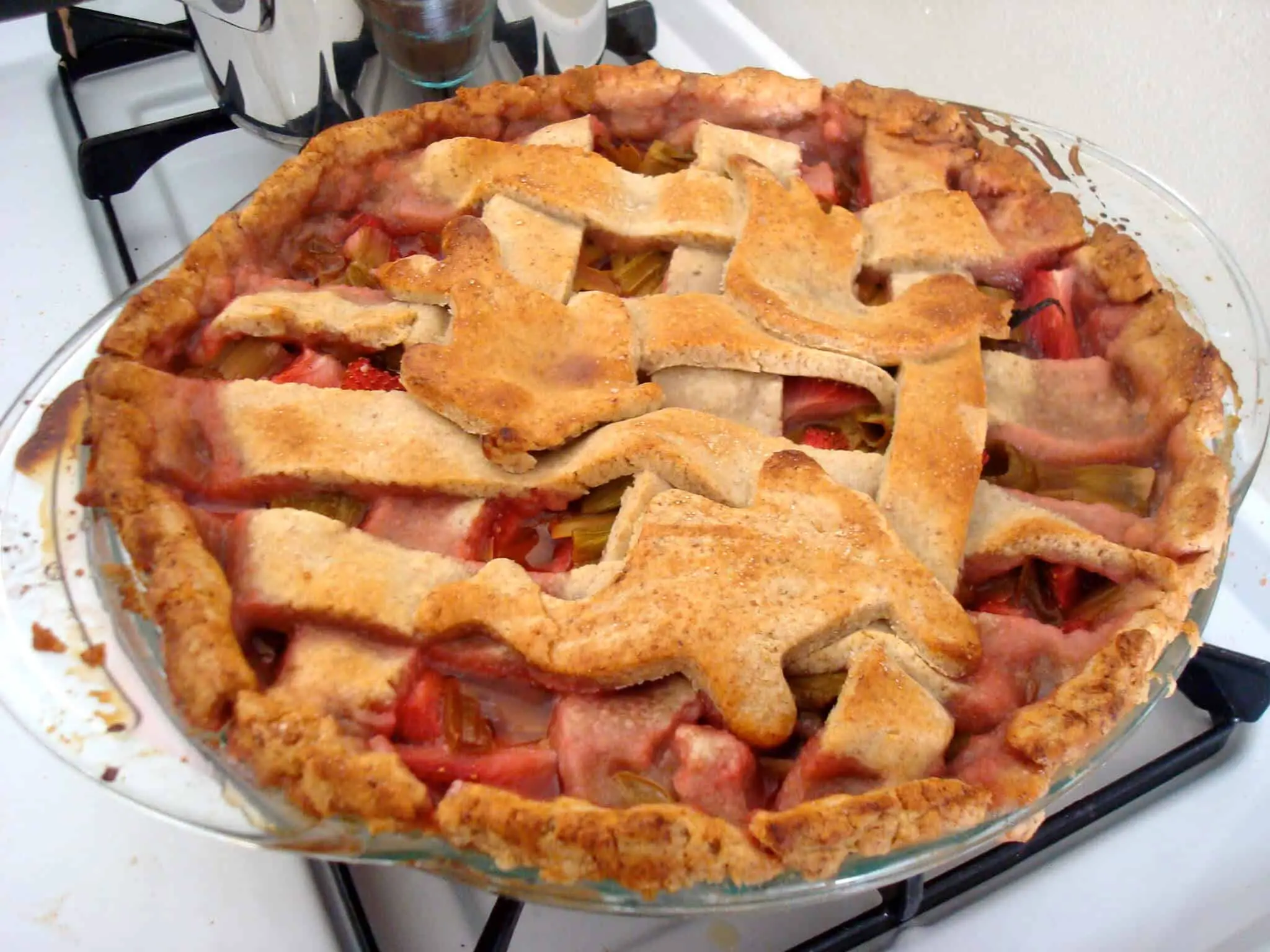
Are you able to identify Japanese knotweed?
As told above, the Japanese knotweed comes in various shapes and sizes, depending on the season. It is advisable to consult a weed specialist when unsure whether you have Japanese knotweed or an identical species on your property.
The Japanese knotweed does not require favourable climatic conditions to flourish, and the plant can grow far and wide anywhere. It grows fast and becomes an infestation within a short while.
Therefore, it is essential to understand that time is of the essence; the faster you act, the better. Weed specialists can survey your property and identify various plant species that might be mistaken for the knotweed.
It is quite challenging to eradicate this weed. However, weed specialists have the skills and information on the type of herbicides to use. Japanese weed eradication ensures that you prevent potential damages that this weed can cause.

